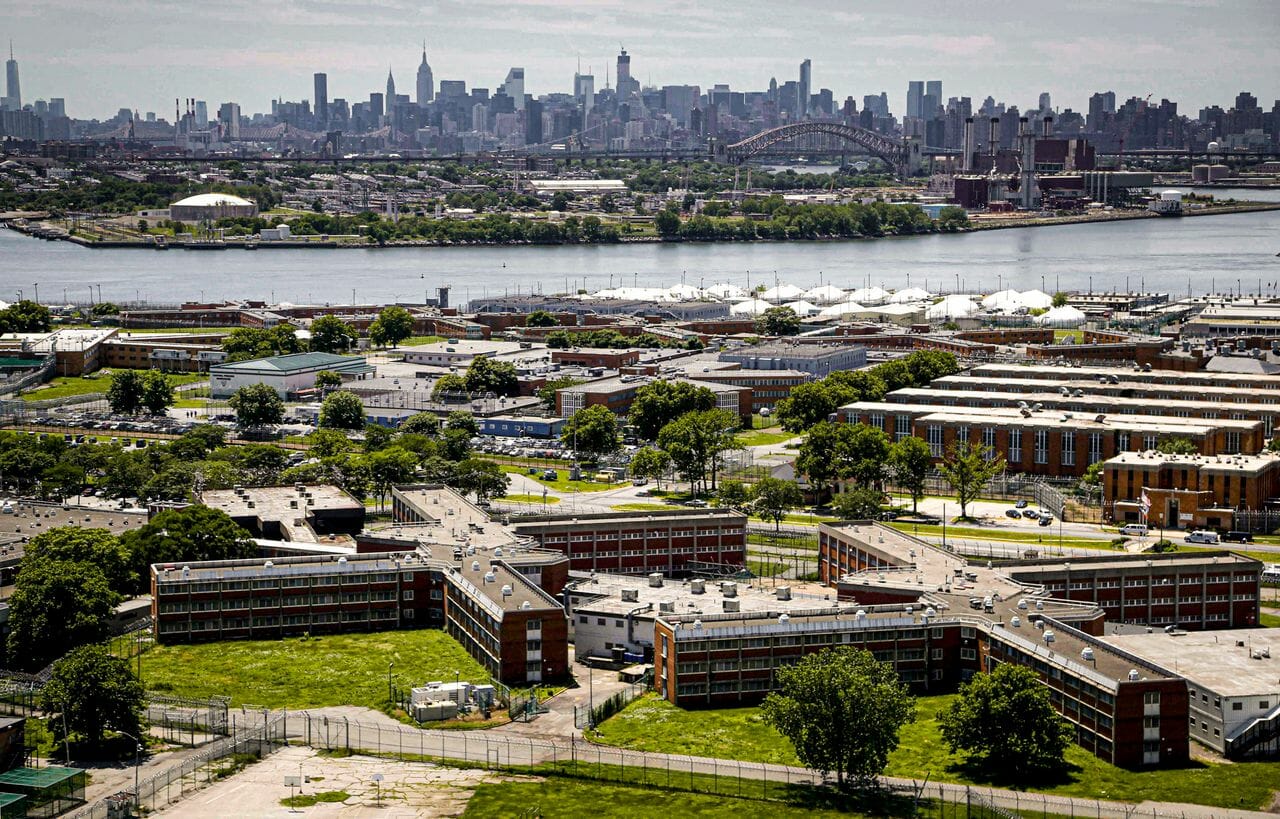
Criminal Rehabilitation and Justice in New York
New York’s large population and dense urban areas create the need for an efficient and comprehensive criminal justice system. To explore that system, this article briefly summarizes crime, justice, reform, what works, and what could be improved with criminal justice in New York.
Prison Population Statistics in New York
The first step to understanding New York’s criminal justice system is to uncover answers to key questions like:
- Does New York have alternatives to incarceration?
- How many people are incarcerated in New York?
- What are the biggest prisons in New York?
- What is the New York recidivism rate?
- What is the New York crime rate?
According to the Bureau of Justice Statistics, New York has the 42nd highest incarceration rate in the nation, behind Connecticut but ahead of New Hampshire. New York incarcerates 177 people for every 100,000 living in the state. That means just eight states (New Hampshire, Utah, Vermont, New Jersey, Minnesota, Rhode Island, Maine, and Massachusetts) incarcerate fewer people per capita than New York.1
Where are people incarcerated in New York? According to the National Institute of Corrections, New York manages 62 jails in 62 counties. The New York jail population in 2019 was 20,500, primarily individuals serving short-term jail sentences or in pretrial detention.2
New York also manages 54 state prisons which hold approximately 43,500 inmates. The state’s community corrections system has 88,879 New Yorkers on probation and 44,917 under parole. New York’s Department of Corrections has a staff of 19,094 and an annual budget of $3.295 billion. According to the Urban Policy Institute, New York’s Department of Corrections is the 7th costliest item on the state’s annual budget, just below public roads and highways.3

Image courtesy of NYSenate.gov
Rikers Island, a 413-acre island in the East River in the Bronx, is the largest prison in New York City and in the state. The prison has an average daily population of about 10,000 inmates, making it one of the largest prisons in the country. New York does not contract with private prisons, though there are four federal prisons and one federal prison camp operating in the state.4
Crime Rates in New York
As one of the most populous states in the U.S., crime rates in New York are carefully reported.
Most crimes in New York have trended downward in the last decade. Between 2011 and 2020:5
- Total crime has dropped 23%. In 2020, New York had the lowest crime rate since reporting began in 1975.
- Violent crime dropped 8% between 2011 and 2020, despite an uptick in firearm-related homicides.
- The murder rate increased between 2011 and 2020 by 9%. (Firearm-related murder spiked 21%).
- Robberies dropped significantly in New York, recording a 38% drop between 2011 and 2020.
- Property crime dropped significantly, with the state recording a 26% drop in such crime.
- Burglaries dropped the most in New York, falling 50% between 2011 and 2020.
- Assaults also fell in the last decade, by approximately 3%.
- Motor vehicle thefts trended upwards slightly, by 6%.
- Larceny also fell, by 23%.
Altogether, New York reported 106,461 fewer crimes in 2020 than in 2011, suggesting the state is doing something right to reduce crime. Further, while crime rates are slightly up in New York City, the data shows that violent crime is trending down in New York State and New York City.
Recidivism Rates in New York

Statistical data on recidivism provides the clearest, most unfiltered view into a state’s criminal justice system’s efficacy (or lack thereof). Unfortunately, though crime is dropping across the state, the recidivism rate in New York is still quite high. One federal report cited New York recidivism at 40%, whereas a local New York Community Service Society report said the recidivism rate is likely closer to 50%.6, 7
Both reports suggest recidivism has been increasing even as crime rates have declined, meaning the prison system produces poorer rehabilitation results even as fewer New Yorkers commit crimes.
Criminal Reform in New York
Criminal rehabilitation in New York is needed to provide a path for criminal offenders that guides them away from a life of crime and towards a life of responsibility, good moral judgment, and wise life choices. While the New York criminal justice system provides offenders with some tools to achieve betterment, policymakers, and criminologists must expand such programs.
“… With no money to fund them, more than 300 college programs packed up and left almost overnight. Studies show that education is crucial to not only finding work but avoiding recidivism.”
Local organizations advocating for better rehabilitation programs in prisons in New York have listed the lack of educational programs in prisons in New York as the primary reason recidivism rates have increased in recent decades. Quoting the Community Service Society, “President Clinton’s 1994 Violent Crime Control and Law Enforcement Act dismantled higher education in prison by eliminating inmate eligibility for federal Pell Grants. The next year, Governor Pataki completely cut inmates’ eligibility for TAP grants that supported college programs in state prisons. With no money to fund them, more than 300 college programs packed up and left almost overnight. Studies show that education is crucial to not only finding work but avoiding recidivism. For these reasons, inmates should be encouraged to acquire education credits while inside and given the means to do so. In fact, there should be incentives for taking education classes. Those who do should be given a time off their sentences for acquiring a GED or a college degree.”
The Need for Alternatives to Incarceration in New York
Alternatives to prison provide a sensible and rehabilitation-focused approach for nonviolent offenders. Alternatives to incarceration in New York reduce exposure to the penal system, thus preventing low-level offenders from experiencing the hardships and adverse effects of time in prison. Further, such programs can offer rehabilitation and life skills for nonviolent and drug possession offenders, providing them with the tools they need to navigate life without resorting to crime.
While existing programs provide immense benefits to criminal offenders in New York, the state must expand rehabilitation programs inside New York and educational programs inside prisons in New York.
Sources:
- BJS. “Prisoners in 2020 – Statistical Tables.” Bureau of Justice Assistance, 2020. bjs.ojp.gov
- NIC. “New York 2019.” National Institute of Corrections, 2019. nicic.gov
- Urban. “Project New York.” Urban Policy Institute, 2022. urban.org
- NYDOC. “Facilities Overview.” New York Department of Corrections, 2023. nyc.gov
- NYSCR. “Crime in New York State 2020 Final Data.” New York State Crime Report, 2020. criminaljustice.ny.gov
- BJA. “State Criminal Justice Profile: New York.” Bureau of Justice Assistance, 2020. bjafactsheets.iir.com
- CSS. “An Effective Policy to Cut Recidivism.” New York Community Service Society, 2012. cssny.org
Related Articles
Education Is a Key Factor in Reducing Offender Recidivism
Research shows that providing inmates with educational services furnishes them with the tools they need to lead happy, successful, productive, and crime-free lives. State and...
Read more >>
Criminal Justice Reform Extends Rights to Felons Who Have Served Their Sentences
For decades, voter enfranchisement or disenfranchisement for incarcerated and formerly incarcerated individuals has been debated. An estimated 4.6 million Americans are barred from voting due...
Read more >>
Nine States Have Reduced Their Prisoner Population by 30%. What Do They Have in Common?
For the first time in decades, several U.S. states are making a concerted effort to reduce their prison populations by applying a range of policy...
Read more >>
Where States Get it Right. The Importance of After-Incarceration Programs for Former Inmates
Criminal justice is a complicated and intricate subject. While the U.S. has the largest prison population in the world, efforts are being taken in several...
Read more >>





